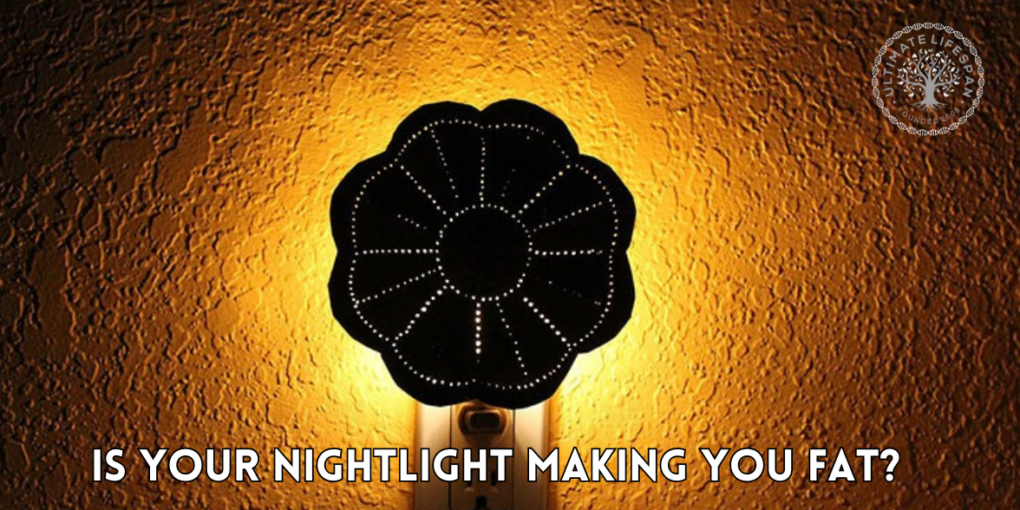Link Between Artificial Light, Nighttime Exposure, and Weight Gain in Women
Introduction
In a world where artificial light brightens our nights as much as our days, a groundbreaking study recently published in the Proceedings of the National Academy of Sciences has emerged, casting a new light on the potential health implications of this modern convenience. Titled “Association of Exposure to Artificial Light at Night While Sleeping With Risk of Obesity in Women,” the research delves into the intriguing link between exposure to artificial light at night (ALAN) and the risk of obesity in women. As we explore this revelation, it's worth connecting it with another recent study on mice, shedding light on the profound impact of ambient light during sleep on weight gain.
Background
For years, researchers have probed the complex factors contributing to the global obesity epidemic. While diet and physical activity are well-established determinants, this study, conducted by a team of esteemed scientists including Yong-Moon Mark Park, Alexandra J. White, and others, uncovers a less-explored factor: the impact of ALAN on obesity.
The Study
While the Proceedings of the National Academy of Sciences study focuses on the surprising relationship between ambient light and weight gain in mice, another study by Park and his colleagues explores a similar phenomenon in women. The research involves 43,722 women aged 35 to 74 years, part of the Sister Study, spanning all 50 US states and Puerto Rico. Participants were chosen based on specific criteria, including no history of cancer or cardiovascular disease and not being shift workers, daytime sleepers, or pregnant at baseline. The study's follow-up concluded in August 2015, with data analyzed until the end of 2018.
The exposure to ALAN in women was categorized into four groups: no light, a small nightlight in the room, light outside the room, and light or television in the room. The primary outcomes measured were the prevalence of general and central obesity at baseline, assessed through various parameters like BMI and waist circumference.
Findings
The combined findings from both studies are both striking and significant. Women exposed to any form of ALAN while sleeping showed a higher prevalence of obesity, measured by BMI, waist circumference, waist-to-hip ratio, and waist-to-height ratio. These associations persisted even after adjusting for potential confounders, suggesting a robust link between nighttime light exposure and obesity.
In the parallel study with mice, researchers discovered that even with interventions such as reduced caloric intake and increased exercise, mice exposed to dim light during sleep exhibited a staggering 50% more weight gain than those in complete darkness. Additionally, these mice displayed glucose intolerance, a precursor to diabetes, raising further concerns about the broader health implications of artificial light during sleep.
Implications
The revelations from both studies have profound implications for public health. They suggest that ALAN, an often-overlooked environmental factor, could play a role in the obesity epidemic. This insight opens new avenues for obesity prevention strategies, emphasizing the importance of a dark sleeping environment. The surprising nature of these results underscores the intricate interplay of hormones within the body and prompts a reconsideration of the role that ambient light plays in our sleep and its potential ramifications on our health.
Conclusion
The research by Park and his colleagues, alongside the recent findings on mice, is a clarion call to reconsider our nighttime environments. While further research is needed to fully understand the mechanisms behind this association, the studies undeniably add a new dimension to our understanding of obesity's multifaceted etiology. They serve as a reminder of the intricate ways in which our modern lifestyles, shaped by technological advancements like artificial lighting, can greatly influence our health.
In an era where light pollution is an ever-present aspect of urban living, these studies underscore the need for awareness about the potential health impacts of our illuminated nights. As we strive for healthier lives, it might be time to turn off the lights and embrace the natural darkness of night, not just for a good night's sleep, but also for the sake of our long-term health.
Fix Your Sleep Environment
Creating an optimal sleep environment means aligning our modern lives with the natural conditions our bodies have evolved to thrive in—conditions reminiscent of the caves our ancestors slept in. The ideal sleep environment should be cool, dark, and quiet, mimicking the cave-like settings where early humans found rest. A cool temperature, around 60-67°F (15-19°C), helps regulate body temperature and signals the body that it's time to sleep.
Darkness is crucial, as it triggers the production of melatonin, the hormone responsible for sleep regulation. Blackout curtains or sleep masks can block out artificial light, while minimizing exposure to electronic devices before bed helps prevent sleep disruptions caused by blue light. Lastly, a quiet environment, free from the noises of modern life, is key. Sound machines or earplugs can be used to mask disruptive sounds. By recreating these “cave-like” conditions, we honor our biology and promote deeper, more restorative sleep.

Sources
Park YM, White AJ, Jackson CL, Weinberg CR, Sandler DP. Association of Exposure to Artificial Light at Night While Sleeping With Risk of Obesity in Women. JAMA Intern Med. 2019;179(8):1061–1071. doi:10.1001/jamainternmed.2019.0571
Fonken LK, Workman JL, Walton JC, Weil ZM, Morris JS, Haim A, Nelson RJ. Light at night increases body mass by shifting the time of food intake. Proc Natl Acad Sci U S A. 2010 Oct 26;107(43):18664-9. doi: 10.1073/pnas.1008734107. Epub 2010 Oct 11. PMID: 20937863; PMCID: PMC2972983.


wow very interesting . i dot use a night lite. but neighbors on both sides have spot lights on the sides of their houses and BOTH sides shine into my room. tyey are so bright you can almost see color you can easily identify objects around the room.